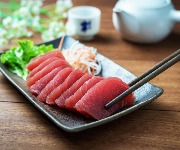What are anchovies and how do you cook with them?
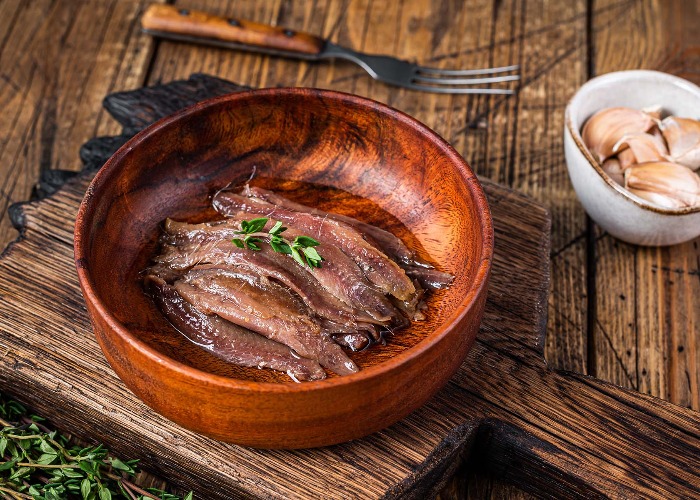
What are anchovies? loveFOOD investigates the much-maligned but transformative ingredient.
The intensely fishy, salty flavour of anchovies has given them a bad reputation – even among the most adventurous eaters. But disappointing experiences are often due to cheap, overly salted products.
You may be unaware that many popular dishes include anchovies, with as little as an eighth of a teaspoon subtly buoying up a recipe. If there’s a taste you can’t quite place, they may well be the culprit. They add an umami depth and robustness, without overt fishiness. They feature in many store-cupboard staples, from Worcestershire sauce to Vietnamese phú quốc and Thai nam pla (fish sauces made with fermented anchovies).
READ MORE: A complete guide to Worcestershire sauce
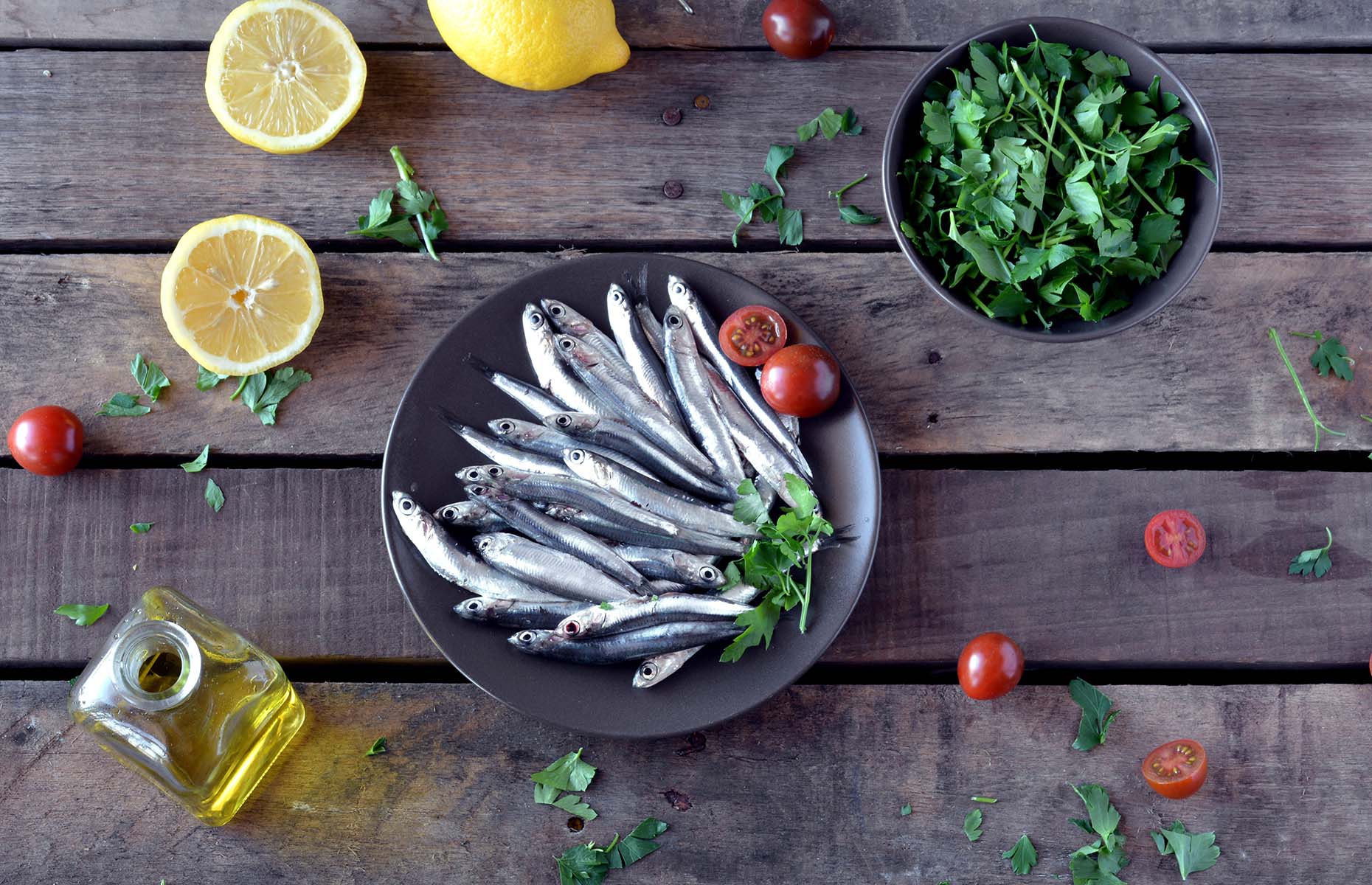 Enfoca y dispara/Shutterstock
Enfoca y dispara/Shutterstock
How do you choose good-quality anchovies?
Anchovies are small, slender fish found in the Black Sea, Mediterranean and Pacific and Atlantic Oceans. However, when you see them in the supermarket they are more likely to be preserved than fresh.
Salt-cured anchovy fillets packed in sunflower or olive oil are the cheapest and most readily available. They are sold in tall, thin resealable jars which is good if you only plan to use a few. Horizontal ring-pull tins or cans are also available, but make sure you transfer what's left over to a sealed container and the fillets are submerged in oil, as storage in an open can will contaminate the taste.
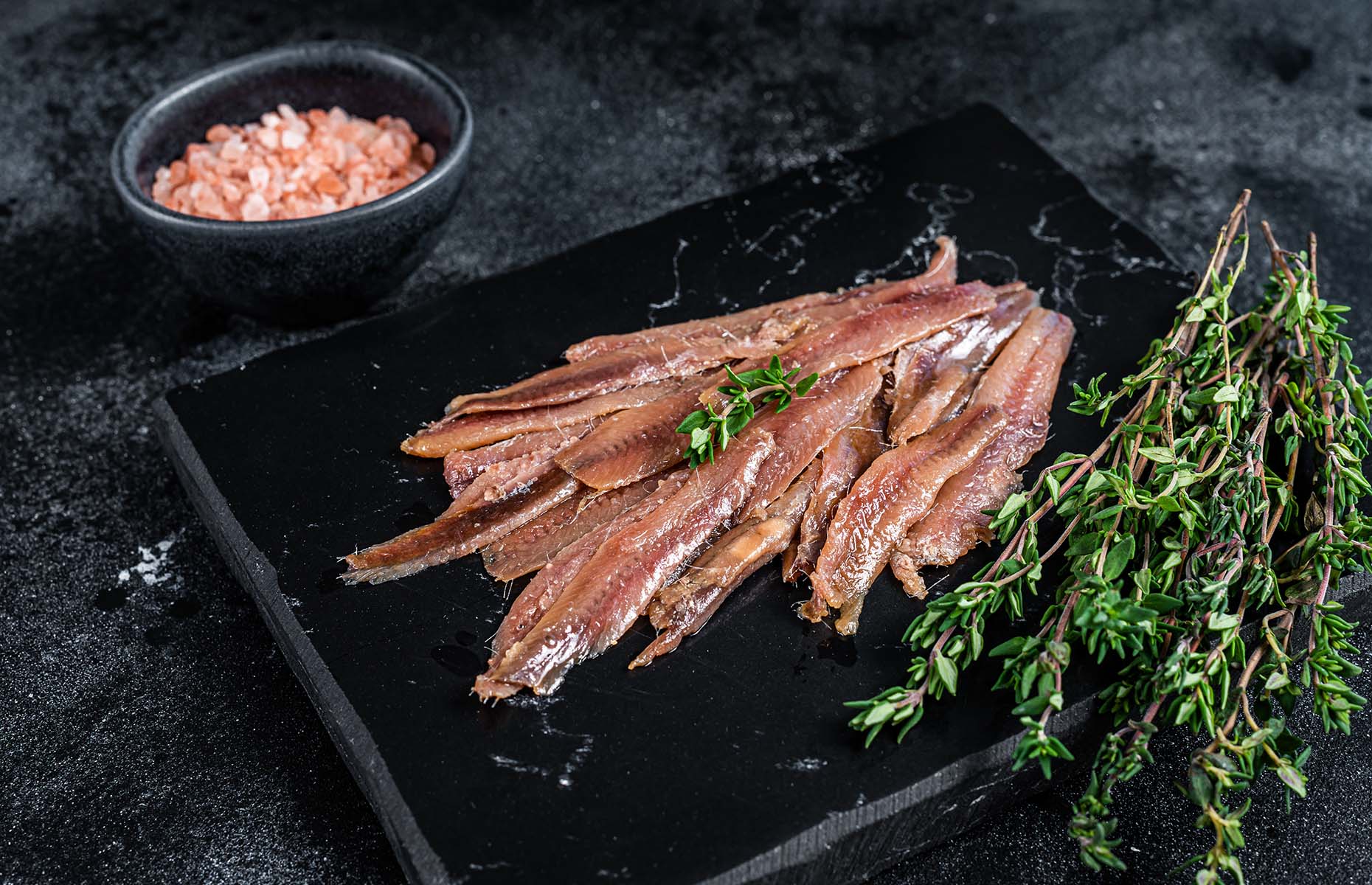 Mironov Vladimir/Shutterstock
Mironov Vladimir/Shutterstock
Another way you can buy them is packed in salt. Whole salted anchovies are meatier, firmer and sweeter, but expect to spend around half an hour prepping them. They are usually left with their bones and fins intact so need filleting. After scraping off excess salt and rinsing with water, an extra soak in either milk or white wine can help soften them. Store the anchovies you haven't touched in a glass jar in the fridge for up to six months.
Less common are marinated anchovies – often known by their Spanish name, boquerones – which are eaten as a snack or tapas dish. They are deboned then marinated in vinegar, oil and salt. The pickling process turns them bright white (unlike the grey or pink flesh of the salted ones) and they are much milder. Try on top of toasted bread with butter.
READ MORE: Make your own chilli oil
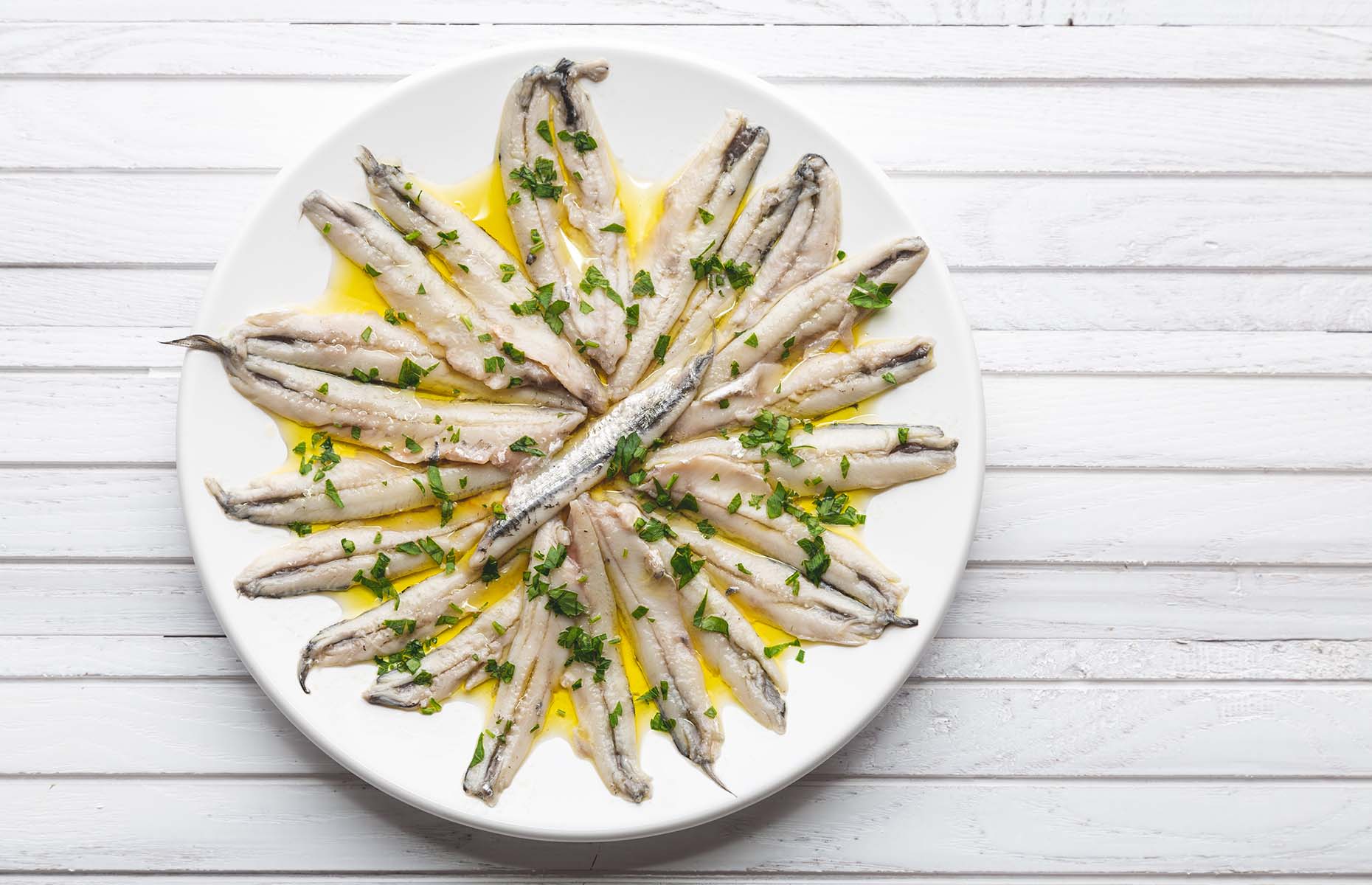 asife/Shutterstock
asife/Shutterstock
Anchovy recipes
Dust off your blender to make seriously speedy anchovy snack. Add a couple of fillets to this tapenade with black olives to spread on toast, crostini or crackers. Did you know you can also add anchovies to homemade pesto or ketchup for an extra layer of flavour?
A simple way to eat anchovies is to use them to pep up pasta dishes. The fillets dissolve into sauce easily and add a savoury hit to a fiery puttanesca, a filling gnocchi bake or garlic, chilli and olive oil spaghetti.
If you can handle whole anchovies, add them to pizzas or the classic French onion tart, pissaladière.
Salads are also often boosted with the umami-laden fish – Niçoise salad just wouldn't be the same without anchovies while the flavour-packed fillets are also a key ingredient in the dressing for Caesar salad.

Sardine/Pavilion Books
Anchovies work very well in lamb dishes – they accentuate the meat's flavour without making it fishy. For a quick and satisfying supper have a go at lamb mince skewers with coriander dip or lamb cutlets with anchovy and herb butter. If you're looking for a weekend project, try barbecued cumin lamb chops with anchovy butter, stuffed shoulder of lamb with cockles or roast lamb with salsa verde.
Clodagh's Suppers/Kyle Books
Anchovies also go well with other fish, so experiment with a piquant salsa verde for sea bass, incorporate in these tuna and olive stuffed peppers and perk up a hearty Niçoise bake
You can even incorporate the high-flavour fish into vegetable dishes – we love this creamy roasted broccoli.
READ MORE: What are capers and how do you use them?
Is anchovy paste worth buying?
If you want to add that extra depth to dishes, anchovy paste is a no-brainer. It comes in toothpaste-like tubes and is stocked near the tomato purée and sauces in most supermarkets. It may be lighter in flavour and saltier than whole anchovies, so take this into account when seasoning.
Lead image: Mironov Vladimir/Shutterstock
Most Recent
Comments
Be the first to comment
Do you want to comment on this article? You need to be signed in for this feature






